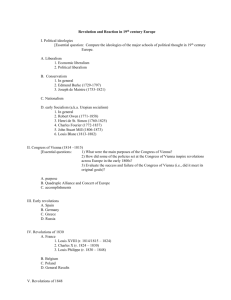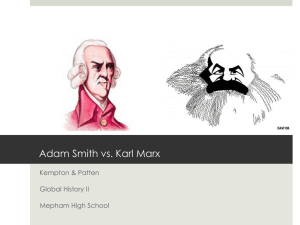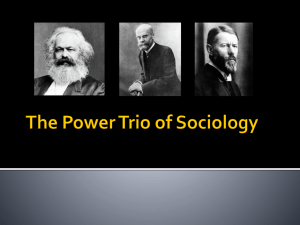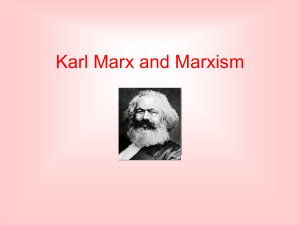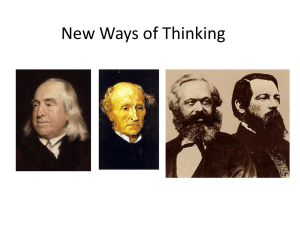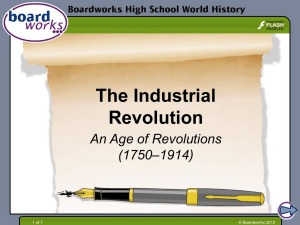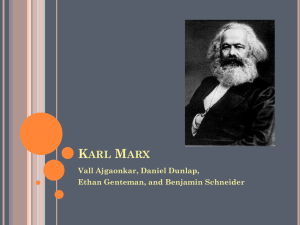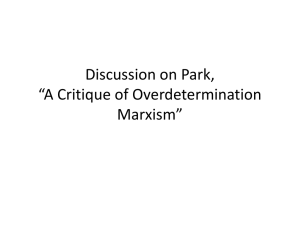Realism, Positivism, Marxism and Materialism.
advertisement
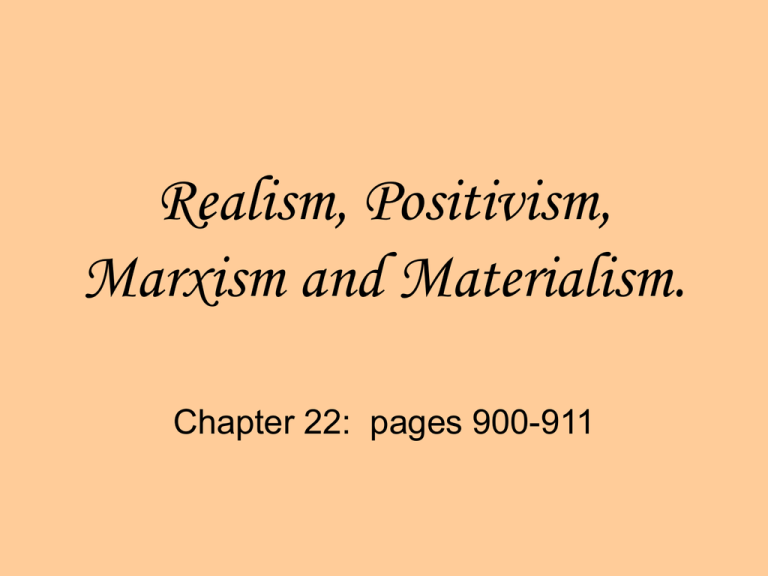
Realism, Positivism, Marxism and Materialism. Chapter 22: pages 900-911 The objectives for this slideshow are: • In what ways did the failed revolutions of 1848 foster the idea of MATERIALISM? • In what ways was REALISM a sign of the times in painting and literature? • Identify what is Positivism— • And, finally, you will learn the important background that influence Karl Marx beliefs and its future impact on Russian History. The revolutions of 1848 spread throughout Europe, and what began with hope was quickly suppressed by reactionary, conservative governments. After the failure of the revolutions of 1830 and 1848, the dreams of many Europeans ended. There had been some positive outcomes of 1848—peasants were freed in Germany and Austria, and many moved to America. Many were bitter about government reaction after the revolutions. This new attitude was called materialism: an idea that all things were a result of physiological or physical forces. In art and music it was called realism. Realism included painters such as Courbet, Millet, and Daumier… Courbet’s paintings were of the peasants— in the countryside, but they were displayed in the salons of Paris, for the bourgeoisie to observe. Perhaps this was a way of saying that “we may have been defeated in the revolutions, but we are still here. Our needs are just.” Realism found its way into the writings of authors such as Flaubert. Flaubert’s Madame Bovary is a landmark novel that mocked romantic illusions about marriage and family life. Emma Bovary commits suicide after many unhappy love affairs… Both writers and painters broke away from the traditions of romanticism and said they wanted “real facts.” Similar to realism was the idea of positivism, which meant that one must insist on verifiable facts and not on wishful thinking. In politics this became Real Politik--but we will learn more about that later. But no other ideas came out of the postCongress of Vienna era which would have more influence than those of Karl Marx. Karl Marx (1818-1883) was the son of a lawyer from Prussia. Marx associated with other German radicals—similar to the radicals we saw in our movie Les Miserables. This group was called the “Young Hegelians.” Marx met Friedrich Engels (18201893) who was the heir to a vast fortune. Marx and Engels met in Paris in 1844. In 1847, they joined the Communist league— which was, at that time, a tiny group of revolutionaries. In 1848—a momentous date in publishing history, the Communist Manifesto was published. What was the Communist Manifesto? It was a “manifesto” that encouraged workers to overthrow the systems that oppressed them. Marx wrote about the alienation of labor…when work becomes so mechanical that people become estranged from the objects they produce. This was something he observed as the unregulated industrial revolution continued in Britain and spread to Europe. A good example of this is factories where people would be doing repetitive tasks for very little pay. Marx studied Hegel’s view of thesis, antithesis and synthesis. Marx echoed that history was the result of impersonal forces— He wrote that conditions , mainly economic, produce the change-- The Communist Manifesto was a summons to revolution… The famous saying, “Workers of the world, unite.” is one of the most famous in history. So remember, this saying has its roots in the unhappy conditions of France and other countries prior and after the 1848 revolutions. Karl Marx spent time in London—where he spent hours in the British Library Reading Room. There he began the research that led to his great works of political and economic analysis, including the monumental Das Kapital. Marx was buried in Highgate cemetery. Marxism’s message began to diminish between 1848 and 1870—labor became organized, most men got the vote, and there were other increases to wages and benefits. And in fact, Marxism should have died out…but instead, he was read and re-read by a young man in the Soviet Union, Vladimir Lenin. The Russian Revolution of 1917 would be a much later outcome of the writings of Karl Marx—70 years after the revolutions of 1848.

